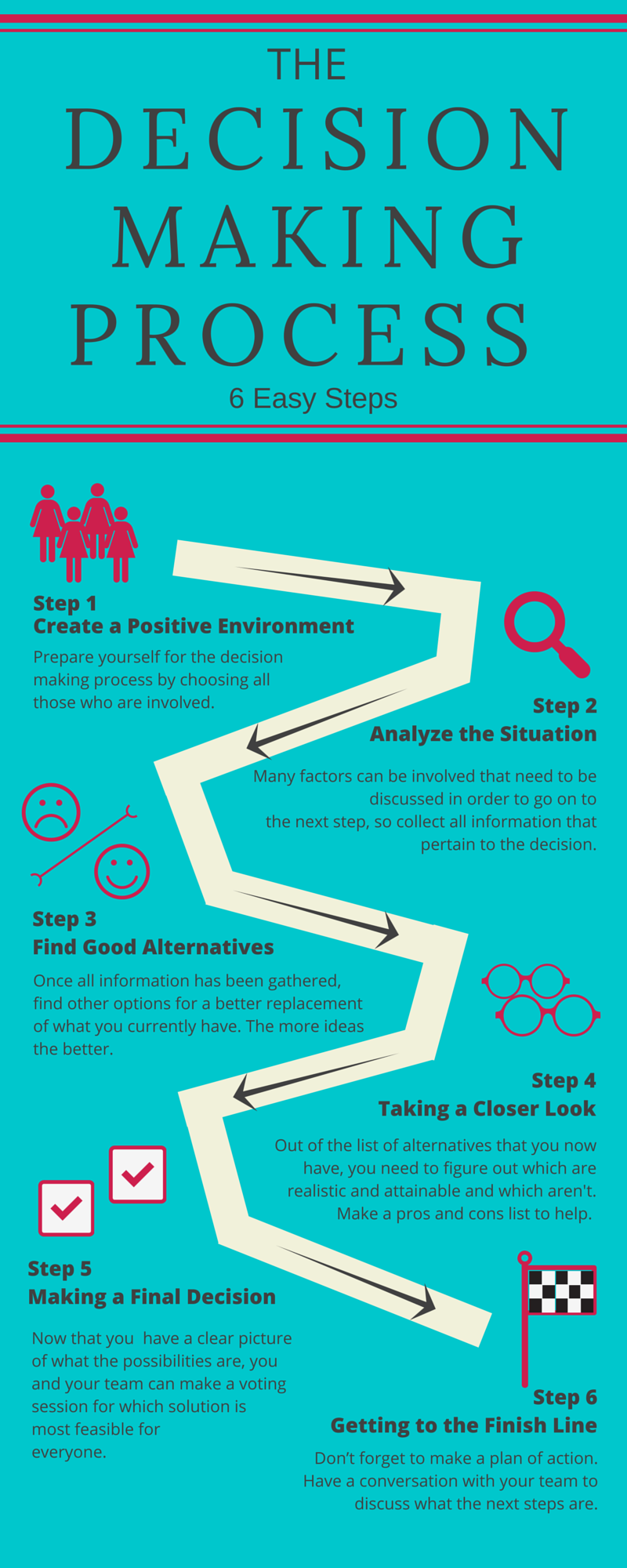In today’s fast-paced environment and rapidly changing technologies, remote teams are quickly becoming the norm and not the outlier.
91% of organisations worldwide have already adopted some form of flexible working
Making decisions in the right way, that matches the new flexible, landscape of work is something leaders need to understand. By making use of the people you have, spending time to understand the situation, weighing a variety of options, and explaining the decision to important stakeholders, leaders can facilitate better decisions and set their teams up for success. No matter what decision needs to take place, follow these simple steps and have a look at the infographic below.
Establish a Positive Environment
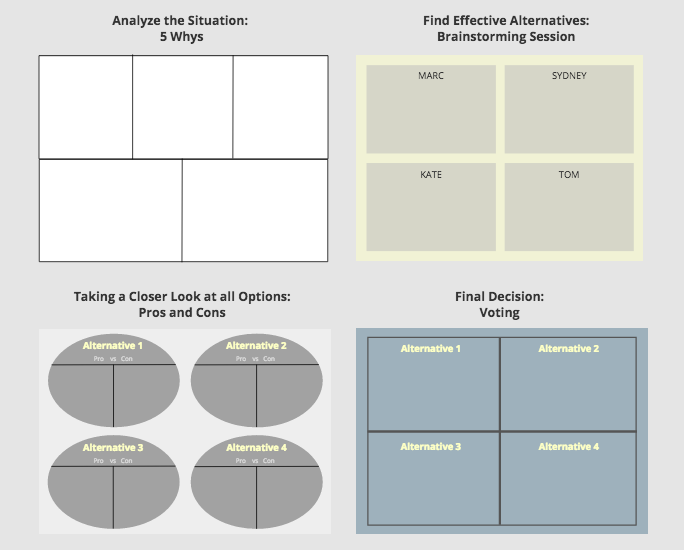
Decisions can become complex when they involve and affect other people in your team, so it helps to have a positive environment in which to research the situation and discuss your options. Create a new board, making sure to add an informative title, and add at least 4 sections to it (see how to set up the sections below).
Invite all users that are part of the decision-making process. Inviting multiple users at a time is easy to do, or you can set up and add them to a Project, if you know you’ll be needing multiple boards. Choose them via the drop down or type in their email addresses, making sure to separate each name with a comma. Encourage everyone to use the moderator mode and live pointers tools to see the exact view port and cursor of each user for easier navigation.
Analyze the Situation in a Team Setting
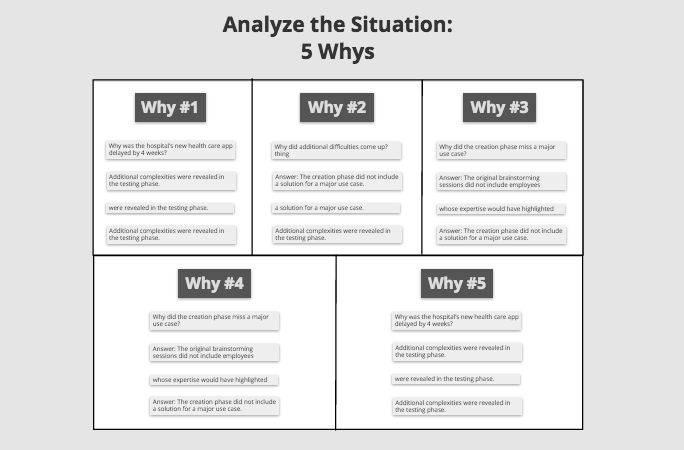
In many situations, gathering all relative information is necessary to make an intelligent decision, and this is easy to do in Conceptboard. Set up the first section to explore relevant content and use the 5 Whys problem solving technique to get deeper insights into your problem.
Divide your 1st created section into 5 smaller spaces so everyone involved can add content in an organized manner. You can set up a template ahead of time using the line tool to divide your section, and then use the text box tool for answering your 5 Why’s. Any information that is needed during this process can be dragged and dropped into the board from your computer or the web.
Find Effective Decision Alternatives
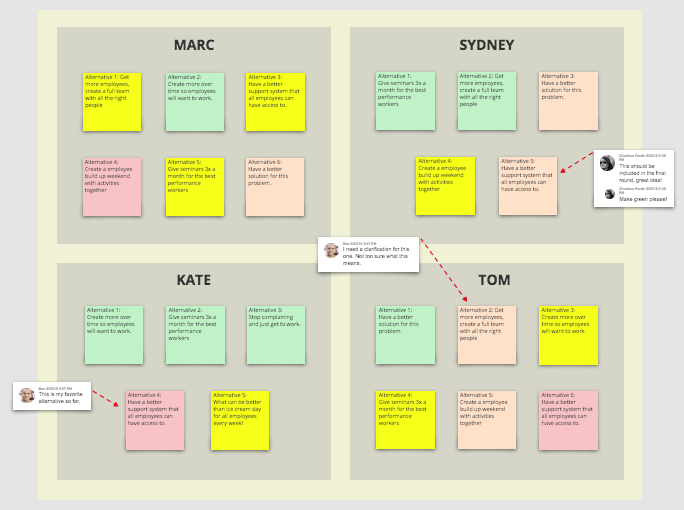
Once relevant information has been gathered and discussed, create a list of alternatives. This step can be a little challenging, especially when it is a heavy decision that needs to be made.
To overcome this, use the second section for brainstorming sessions with your team. If done correctly, brainstorming can be effective to help your team come up with a large variety of ideas. This also helps avoid Groupthink, the tendency that groups choose the option that appears to be gathering support, whether it’s the best or not, in order to minimize conflict.
It’s best to insert smaller sections for each member of your team, so everyone has their own space to include their thoughts and ideas with sticky notes. Each participant can color code the sticky notes to show level of importance, for example, all green sticky notes are their favorite ideas. You can also use comment tools to leave feedback on the best ideas, and if necessary, create another round of brainstorming.
Taking a Closer Look at all Options

Now that you have compiled a list of your best options, you need to figure out which will be the best solution. You will need to look at all sides of each alternative and see whether it is realistic or not. You will also need to take into account how it will affect the individuals involved.
The best way to do this is to do a round of risk assessment and analysis. You can choose a more detailed analysis template or use the good-old pros and cons list for your options. As before, set up the template ahead of time so that content stays organized and the discussion stays structured. In the 3rd originally created section, you can copy over the alternative options from section 2, or create navigation links to the options, in case you need to review several items for each option.
Making a Final Decision

After gathering all information relating to the decision that needs to be made, finding different options for a better solution, and evaluating each solution, it is time to make a decision. You will now have a clear picture of all the possibilities that you did not have before.
If the final decision needs to be taken by stakeholders, you can still leverage the experience and knowledge of your team and the collaborative session you just had. Copy the final alternatives to the 4th originally created section, and do a quick round of dot voting, a great agile technique for making decisions in teams. Have everyone use the ellipse tool to mark the section that they thought were best.
You can decide to choose the most popular choice right off the bat or create multiple voting sessions and use process of elimination.
Getting to the Finish Line of Making Decisions
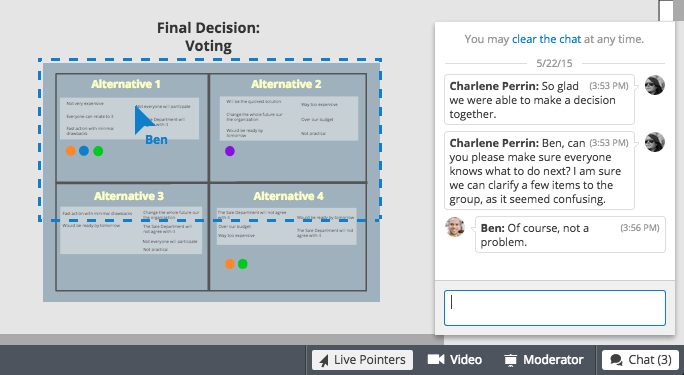
There is not one right way to make a decision, and teams have many options at their disposal for making decisions. The decision-making process is dependent on several factors, including resources, complexity, time, risks, and need for commitment or compliance.
Once the final decision has been made, don’t forget to make a plan of action. Have a conversation with your team to discuss what the next steps are. Make sure to @mention and assign tasks to the relevant team members, so they know what their next steps are for the project.
We’ve put together an infographic for following the 6 steps of decision making in Conceptboard! Check it out below:
